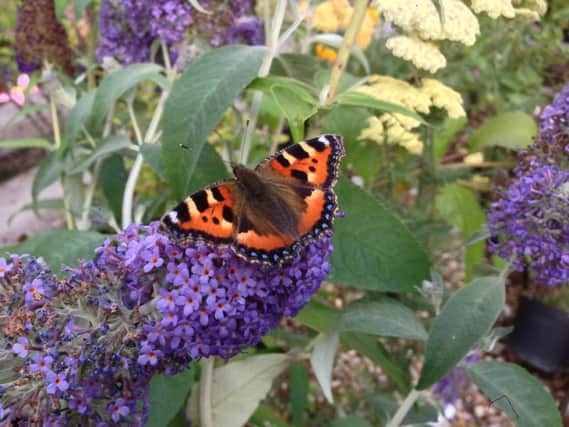Country & Coast: Roger Ratcliffe


I reached a score of 25 in under an hour and could probably have added several hundred more if I’d continued onwards to Kettlewell.
The white-fringed, iridescent lilac blue of the male’s wings is one of the loveliest sights of the summer countryside.
Advertisement
Hide AdAdvertisement
Hide AdI don’t need to drive to the Dales to see it, however, because the common blue is star attraction much closer to home at what must be Yorkshire’s most unusual nature reserve.
Shipley Station Butterfly Meadow has been established on an overgrown patch of ground hemmed in by a car park, railway platform and access road.
Remarkably, its sweet greensward of herb-rich grasses and flowers survived the Industrial Revolution which covered most of this part of the Aire Valley with grimy mills and smokestack factories, railway lines and trunk roads.
Developments crept around the ancient meadow until it shrank to the size of a large tennis court, and it is a lovely thought that these small butterflies are descendants of a colony which existed here when the area was grazed by sheep 200 years ago.
Advertisement
Hide AdAdvertisement
Hide AdThe males sometimes charm visitors by coming to sit on outstretched hands, and pose for photographs as they take nectar from bird’s-foot trefoil.
The butterflies emerge from their chrysalis in mid-June and two sets of eggs are laid by August before the second brood’s half-grown larvae hibernates.
In one of the most remarkable relationships of the natural world, through the winter the common blue’s larvae is taken into the nests of ants, below ground, and given nutrients in return for a honey-like secretion.
The meadow is run by the Yorkshire branch of national organisation Butterfly Conservation, whose conservationists saved it from a certain concrete fate back in the 1990s.
Advertisement
Hide AdAdvertisement
Hide AdFor those unfamiliar with the site, Shipley is one of the busiest commuter stations serving Leeds and Bradford, and because the meadow could be mistaken for waste ground some passengers sadly make use of it by dumping bottles and cans or discarding their used tickets. As a result of this reckless behaviour, volunteers have to hold regular rubbish clear-ups.
Other butterfly species like meadow browns, wall browns and skipper are encouraged by the conservation efforts at the station with grasses such as foxtail, red fescue and coxfoot all features of this special plot.
Nettles draw the likes of red admirals and peacocks, while a buddleia is a magnet for painted ladies and tortoiseshells. And like many other places in Yorkshire the meadow has been colonised by the speckled wood, a species which has spread to the North of England from the Midlands because of climate change.
Standing there watching all these small wings flit about in the sunshine as train after train went in and out of the station, it once occurred to me that many of the passengers clambering on and off the carriages were in too great a hurry to notice them, and the meadow should be promoted on the train station’s public address system.
“The butterflies now feeding at Platform Two…”